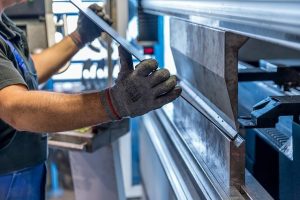
Steel is found in countless consumer and commercial products. It’s used to make everything from cutting tools and die sets to bridges, buildings, fasters, furniture and more. In the United States, over 80 million tons of steel are produced annually. While all steel consists of iron mixed with carbon, there are different types of steel, including galvanized.
What Is Galvanized Steel?
Galvanized steel is similar to traditional steel except it’s coated in a protective layer of zinc. Like traditional steel, it consists of iron that’s mixed with a small amount of carbon. Most types of steel contain over 99% iron and less than 1% carbon — and galvanized steel is no exception.
The difference is that galvanized steel features an added layer of zinc. While typically invisible to the naked eye, galvanized steel has a thin layer of zinc covering its surface. Traditional steel doesn’t have this layer of zinc. Steel is considered galvanized if it’s made with this extra layer of zinc.
How Steel Is Galvanized
There are a few different galvanization processes used for steel, the most common of which is the hot-dip method. With the hot-dip method, raw steel is submerged or dipped into a bath of molten zinc. Zinc, of course, will melt when exposed to enough heat. During the hot-dip method, zinc is heated until it liquifies. The raw steel is then submerged in this molten zinc. Once the raw steel is removed, it’s allowed to cool. As the temperature of the molten zinc drops, it hardens while transitioning back to a solid state. Known as the hot-dip method, it’s the primary way in which steel is galvanized.
The Benefits of Galvanized Steel
Steel is galvanized primarily to protect against corrosion. Since it’s comprised mostly of iron, steel is susceptible to corrosion. Corrosion is a chemical reaction that occurs when iron is exposed to oxygen. Whether it’s oxygen in water or oxygen in air, it will trigger a reaction that eats away at iron and alloys containing iron.
Galvanized steel is virtually immune to corrosion. Oxygen can’t penetrate the protective zinc layer covering galvanized steel. As long as the zinc layer remains intact, the underlying steel won’t be directly exposed to oxygen. This is why galvanized steel doesn’t rust or corrode like other types of steel. Even with its protective layer of zinc, galvanized steel is still strong. It’s typically not quite as strong as stainless steel or carbon steel, but it’s still stronger than many other materials, including iron.
